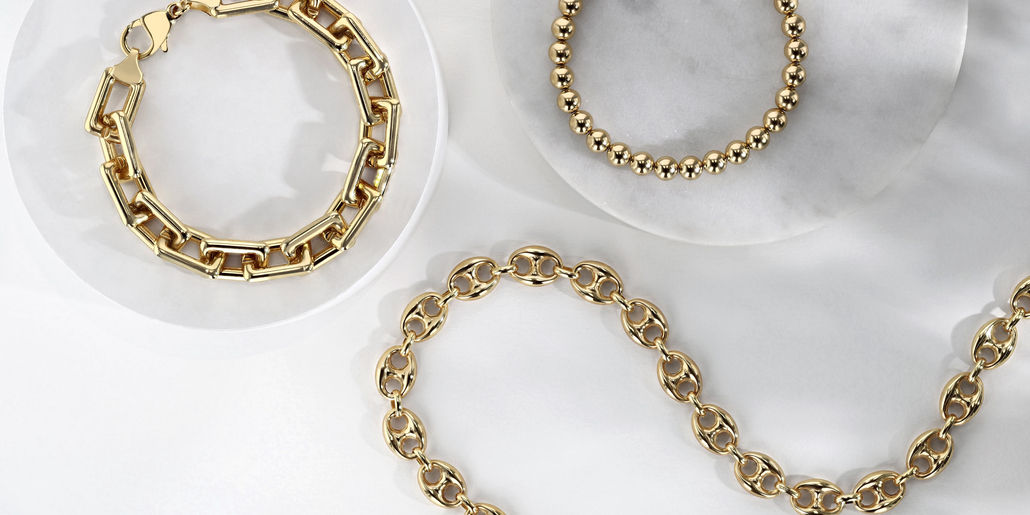You’ve purchased a beautiful piece of gold jewelry, a timeless accessory you plan to cherish for years. But then you notice a slight discoloration or a dullness that wasn’t there before. This might lead you to wonder: does gold tarnish? The answer is a bit more complex than a simple yes or no, but understanding the science behind it can help you keep your gold jewelry shining bright.
This guide will explain what tarnish is and why it affects certain metals. We’ll explore why pure gold is resistant to tarnish and how gold alloys can behave differently. Most importantly, you’ll learn practical gold jewelry care tips to maintain that brilliant luster for a lifetime.
What Is Tarnish and Why Does It Happen?
Tarnish is a thin layer of corrosion that forms on the surface of certain metals. It’s the result of a chemical reaction between the metal and various compounds in the air, primarily sulfur. When metals like silver, copper and brass are exposed to oxygen and sulfur-containing gases, they undergo a process called oxidation, which creates a dark, dull film on the surface. Factors like humidity, pollution and contact with certain chemicals (like those in perfumes, lotions or even some foods) can accelerate this process.
While it can be frustrating to see your beautiful items lose their shine, tarnish is usually just a surface-level issue. In most cases, it doesn’t damage the underlying metal and can be removed with proper cleaning.
Does 24K Gold Tarnish?
Pure gold, also known as 24-karat (24k) gold, is one of the least reactive chemical elements. It is highly resistant to oxidation and corrosion, meaning it will not tarnish, rust or corrode.
If you own a piece of 24k gold, you can be confident that it will remain untarnished, regardless of exposure to air or moisture. However, pure gold is extremely soft and malleable. It scratches and bends easily, making it impractical for everyday jewelry like rings, bracelets and chains.
To make gold strong enough for daily wear, it is almost always mixed with other metals to create an alloy. This is where the potential for tarnish comes into play.
Pure Gold vs Gold Alloys
The “karat” system tells you the purity of gold in a piece. 24k is pure gold, while lower karats contain a mix of gold and other metals. The metals added to create the alloy—such as copper, silver, nickel and zinc—are what can cause the appearance of tarnish.
Does 18K Gold Tarnish?
18k gold is composed of 75% pure gold and 25% other metals. Because of its high gold content, 18k gold is highly resistant to tarnishing. While slight discoloration may occur over many years, especially if exposed to harsh chemicals, it’s generally a reliable and durable choice for fine jewelry that maintains its color well.

Does 14K Gold Tarnish?
14k gold contains 58.3% gold and 41.7% alloy metals. With a significant percentage of other metals, 14k gold has a slightly higher chance of tarnishing than 18k gold. The alloy metals, particularly copper and silver, can react with the environment and cause minor discoloration over time.

Does 10K Gold Tarnish?
10k gold is made up of 41.7% gold and 58.3% other metals. Because it contains more non-gold metals than 24k gold, it’s the most prone to tarnishing among common gold alloys. The higher levels of copper and silver increase its susceptibility to oxidation, which can cause a darker patina to develop over time—especially if the piece isn’t worn or cleaned regularly.
It’s important to note that any “tarnish” on gold alloys is actually the alloy metals reacting, not the gold itself. The gold within the piece remains pristine.
How to Clean Tarnished Gold
Cleaning tarnished gold is a simple process that can restore your jewelry’s shine. Start by filling a small bowl with lukewarm water and adding a few drops of soft, fragrance-free soap. Place your gold jewelry in the soapy water and let it soak for a few minutes to loosen any dirt or residue. After soaking, rinse the pieces thoroughly under clean, lukewarm water to remove any remaining soap. Thanks to gold’s high resistance to corrosion, you can confidently use mild cleaning solutions and soft brushes without worrying about damage. Once clean, use a jewelry polishing cloth to gently buff the surface in a circular motion, restoring the gold’s natural shine and brilliance.
If you’re unsure or dealing with valuable or delicate jewelry, bring it to Borsheims for professional cleaning.
Gold is one of the most enduring materials we wear. And while tarnish may appear from time to time—especially on lower-karat pieces—it’s never permanent. Visit our Customer Service department today and bring back the glow to your gold.

